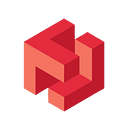What is wealth management?
In order to truly understand what wealth management is, we must first understand asset management.
Asset management is when a financial institution manages funds on behalf of an individual or an organization. It’s managed in financial products like mutual funds, stocks, bonds, hedge funds, and a lot of other fiduciary options. Wealth management is all that plus understanding someone’s entire balance sheet. This now includes both their assets and liabilities. Wealth management is essentially the concept of assisting someone in terms of both their incoming and outgoing funds while trying to make the most out of the remaining balance.
The history of asset and wealth management
Wealth and asset management used to be a means for banks to cater to and provide a more exclusive service to their wealthy clients. Over time, however, people began realizing that managing your funds and building your future is a service that everyone can partake in. Today, it isn’t just banks that can help you with wealth management but other asset management firms, crypto and DeFi platforms, and even blockchain projects can provide a similar service which then empowers everyone to build their wealth, not only the 1%.
Diversification
The importance of looking across the whole board. Crypto — which involves a whole ecosystem of tech, DeFi, DAOs, NFTs. Stocks — shares of a company. REITS or real estate. Gold and other commodities. Fixed deposits — for low interest but safer bets.
Diversifying crypto reduces the risk of investors because they can invest money in different projects, and if one or more performs poorly, the other projects can balance the risk. Implementing a diversification strategy lets you achieve the best returns even when some in your portfolio are performing poorly.
If you are a savvy investor, you will not put your eggs in one basket because it is too risky. It would be best if you invest in just two or three cryptocurrencies if you are a small-scale investor. However, this will not build a sizable portfolio.
With this platform, you can easily invest in different projects, and there is no limit to how many.
Today’s most popular ways to manage wealth today
The blockchain industry sees the use of staking platforms, commonly known as ‘farms’ or ‘farming’, to aggregate funding and provide percentage-based earnings for consumers. There have been many reiterations of the concept of farming over the years, the introduction of locked staking allowing investors to utilize the same framework as fiat time deposit schedules for their cryptocurrency assets. Oftentimes DeFi projects will provide their own version of a staking platform on the same network their native token is built on, while some will push live on as many as possible to allow for a larger user base.
A recent innovation introduced to the blockchain is flexible locked staking, wherein investors can customize their locked staking period and begin claiming their yield a year from their claim date.
Decentralized autonomous organizations, or ‘DAOs’, act as a kind of venture capital fund with open code and no board of directors, governing power instead residing with the DAO members themselves, banking on the power of crowdsourcing without giving away anonymity. DAOs all over the world provide investors with a limited number of slots for certain tokens, whether already established or having just been launched on the blockchain. A common hurdle experienced by investors is the number of tedious steps to even be able to operate on the DAO’s platform itself, the complications of the process already deterring the majority of users.
The problem with having too many wealth management portals
When there are too many wealth management platforms, you will hesitate to fully engage because there are fragmented products, complicated fee structures, and services. Most of the time, they cannot completely address all your financial needs.
The primary solution is that wealth management platforms should use more efficient technology, and be able to consolidate everything in one platform just like this one. This way, you will not need too many wealth management platforms.
In addition, iBG’s Investment Portal only requires you to purchase tokens and everything else is automated. All you need to do is wait for your returns. Of course, you can choose which projects to invest in, but everything else is seamlessly done for you.
Risk Management
An investor’s trick to managing himself is understanding his risk appetite, knowledge of the market, and adjusting accordingly. This is not to mention platform familiarity and the potential losses that may be incurred if the token purchasing process of a staking or DAO platform isn’t followed to a T.
Buying into cryptocurrencies and being able to utilize these assets on DeFi platforms are two different things altogether. If your goal is to grow your portfolio, oftentimes your first thought would be to diversify through a variety of platforms. What is often missed in consideration is the time needed to monitor and maintain the assets invested into these numerous platforms, alongside the vetting process for each project you decide to buy into for security.
Risk management does not only encompass how hungry you are for growth but the routine maintenance of the assets you’ve put in to ensure your wealth doesn’t find itself depleting when you aren’t looking.
There has yet to be a DAO on the market that caters to this specific facet of investment risk management. To date, major players in the industry continue to propagate the idea that investing in cryptocurrency must follow a convoluted process for purchasing the DAO’s native token alone, the steps required to actually put your wealth into the platform being a completely different story. An investment portal to mitigate the inconveniences and security aspects would revolutionize the way we see cryptocurrency and decentralized finance as a whole.
